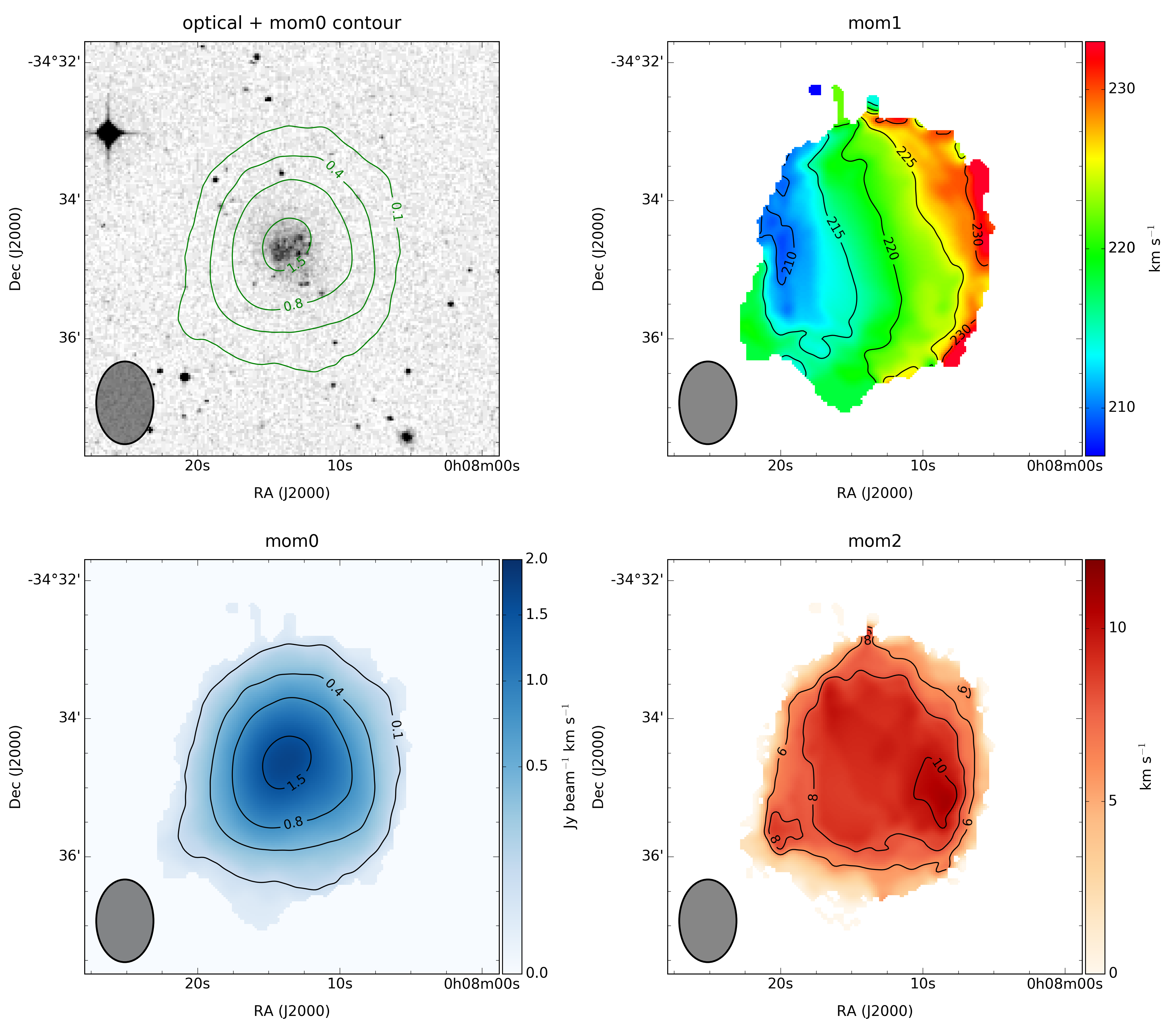ESO 349-G031

ESO 349-G031 (HIPASS
J0008-34), best known as the Sculptor Dwarf Irregular Galaxy (SDIG),
has an extremely low stellar luminosity and is most likely a transition-type
dwarf galaxy (Côté et al. 2000). For a comprehensive study of
its stellar properties and star formation history see Heisler et al. (1997) and
Lianou & Cole (2013), respectively. Karachentsev et al. (2006) determined a
TRGB distance of 3.21 ± 0.26 Mpc. Its nearest neighbour is the spiral
galaxy NGC 7793, which lies at a projected
distance of ~3 degrees (~200 kpc). Our ATCA data show a resolved HI source with
a clear velocity gradient. We measure FHI = 4.8 Jy km/s and derive
MHI = 1.2 x 107 M☉; our fitted HI
position agrees with the optical centre. Using higher resolution VLA HI maps
Côté et al. (2000) find the HI kinematical major axis (118 degr)
− also seen in our ATCA HI maps − perdendicular to the optical
position angle (30.3 degr), suggesting that the gas is rotating about the
optical minor axis. This would make SDIG another dwarf transitional galaxy.
Similar misalignments are seen in Sextans A (Skillman et al. 1988),
NGC 5253 (Kobulnicky & Skillman 1995;
Lopez-Sanchez et al. 2008, 2012), and GR 8 (Carignan et al. 1990). Hα
images of SDIG show very faint regions of diffuse emission (Meurer et al.
2006; Kaisin et al. 2007) and two point sources (Bouchard et al. 2009). Higher
resolution ATCA HI maps will provide more information on the morphology and
peculiar kinematics of the cold gas.
Reference:
Koribalski et al. 2018
* LVHIS database
* LVHIS homepage
* next